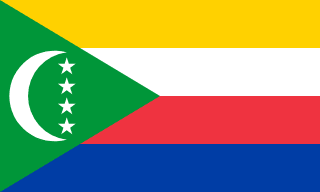Comoros - Environment

As far as the environment of Comoros is concerned, there have been deforestation; soil degradation and erosion results from forest loss and from crop cultivation on slopes without proper terracing; marine biodiversity affected as soil erosion leads to the silting of coral reefs. As for nvironment - international agreements, we have; Biodiversity, Climate Change, Climate Change-Kyoto Protocol, Climate Change-Paris Agreement, Comprehensive Nuclear Test Ban, Desertification, Endangered Species, Hazardous Wastes, Law of the Sea, Ozone Layer Protection, Ship Pollution, Wetlands.
About the environment of Comoros
| Climate | We have tropical marine; rainy season (November to May) |
|---|---|
| Revenue from forest resources | 1.39% of GDP (2018 est.) |
| Revenue from coal | 0% of GDP (2018 est.) |
| Waste and recycling | Municipal solid waste generated annually: 91,013 tons (2015 est.) |
| Total renewable water resources | 1.2 billion cubic meters (2020 est.) |
| Major rivers (by length in km) | |
| Total water withdrawal | |
| Municipal | 4.8 million cubic meters (2017 est.) |
| Industrial | 500,000 cubic meters (2017 est.) |
| Agricultural | 4.7 million cubic meters (2017 est.) |
| Air pollutants | |
| Particulate matter emissions | 14.37 micrograms per cubic meter (2019 est.) |
| Carbon dioxide emissions | 0.2 megatons (2016 est.) |
| Methane emissions | 0.19 megatons (2020 est.) |
| Land Use | |
| Agricultural land | 84.4% (2018 est.) |
| Agricultural land: arable land | arable land: 46.7% (2018 est.) |
| Agricultural land: permanent crops | permanent crops: 29.6% (2018 est.) |
| Agricultural land: permanent pasture | permanent pasture: 8.1% (2018 est.) |
| Forest | 1.4% (2018 est.) |
| Other | 14.2% (2018 est.) |
| Urbanization | |
| Urban population | 30.1% of total population (2023) |
| Rate of urbanization | 2.97% annual rate of change (2020-25 est.) |
| Major urban areas (Pop) | 62,000 MORONI (capital) (2018). |
All Important Facts about Comoros
Want to know more about Comoros? Check all different factbooks for Comoros below.









